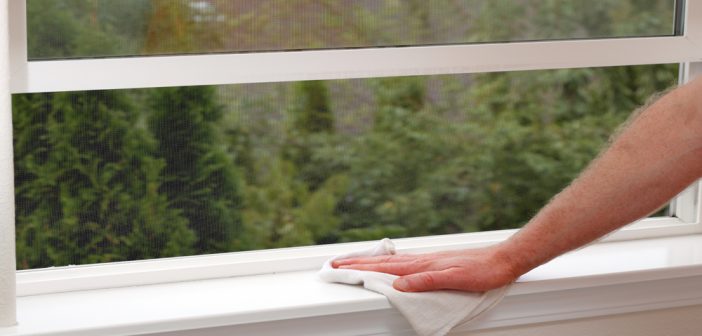Although warmer weather and the change of the season is a reason for celebration, seasonal allergies definitely are not. Pollen is one of the most potent outdoor allergens, causing nasal irritation and difficulty breathing. Some people cannot even comfortably wear contact lenses when the pollen count is high.
Pollen is one of the most potent allergens in the world, and what’s more, it is not limited to any particular region of the country–nearly any home can be affected. With that in mind, here are a multitude of actionable tips to pollen-proof your home and stay comfortable this allergy season.
Keep Your Windows Closed on High Pollen-Count Days
Pollen is microscopic, so your windows’ screens are not much of a defense against it. When the pollen count is high in your area, it’s well-worth the extra money to use your home’s air conditioning unit as opposed to opening your windows to cool down. We’d also advise against using your ceiling fans, because they stir up a lot of dust, exacerbating allergy problems.
Vacuum as Often as You Can
Your vacuum cleaner is a good weapon in keeping pollen out of your home. Aim to vacuum your home at least two times per week–more if you have carpet. Carpet collects massive amounts of dust and pollen. If you have several rugs, you may want to consider getting rid of some of them.
Wipe Your Feet Before You Enter the House
When the pollen count is high, you should always attempt to remove debris from your shoes on your home’s welcome mat outside the door. Afterwards, remove your shoes to prevent spreading any remaining pollen throughout your home.
Personal Hygiene Tips
While your skin and body hair can trap a lot of pollen, the hair on your head is a veritable magnet for pollen and similar allergens. You should wash your hair every day, especially when the pollen count is on the higher end of the spectrum. Furthermore, you should wash it before you go to bed, otherwise, these allergens may end up travelling into your pillow, blankets, and even making its way into your mattress itself.
Brush Your Pets as Often as You Can
Don’t forget to wipe your pets paws–much like your shoes, they can easily spread allergens like pollen throughout your home.
Let Your Washing Machine Do the Heavy Lifting
In the spring and summer months, nearly every surface of your home is at risk for collecting pollen, as well as other allergens and irritants. This includes your bedding and various household linens. Wash your sheets, pillowcases, and towels at least once a week if you’re suffering from pollen and other seasonal allergies.
Ditch the Drapes and Other Dusty Window Coverings
While drapes are often an attractive window dressing for your home, they are the enemy of allergy sufferers everywhere. If you have drapes on your windows, you should seriously consider replacing them with blinds or wooden slats, which will collect far less dust, pollen, and other nasty airborne allergens. You may already have blinds or slats–in this case, you should avoid dusting them, opting instead to vacuum dust away.
Keep Your Car Covered and Your Garage Door Closed
Pollen spreads every time you open your car doors or windows. This can spread to your clothes, which in turn can pollute your home. If your car seems to be prone to pollen, we recommend carrying sanitary wipes handy so you can wipe your hands after touching it.
Filter Your Home’s Air
The air conditioners air filter is your home’s last line of defense against pollen. Cleaning and replacing your air filter frequently is one of the best ways to ensure that your home is as pollen-free as possible.
Consider Upgrading to a HEPA Filter
Our last suggestion to keep your home free of pollen is to “bring out the big guns.” High-efficiency particulate air (HEPA) filters provide increased allergy protection for those affected by various allergens.
A Few Other Facts You Should Know About Pollen
It’s important to know your enemy; let’s look at a few facts you should know about pollen.
Pollen is a powdery yellow substance, usually very fine in consistency, made up of the microscopic granules discharged by flowers and certain other plants. This common allergen is primarily transported in high winds, but it can also easily attach itself to your pets, or even insects that make their way inside your home.
The pollen count measures how many pollen grains are present within a cubic-meter of air. People with allergic disorders will probably know when the pollen count is high, but there are several ways to measure the amount of airborne pollen.
While it’s unrealistic to completely eradicate pollen from your home, tips above will help keep it to a minimum.









